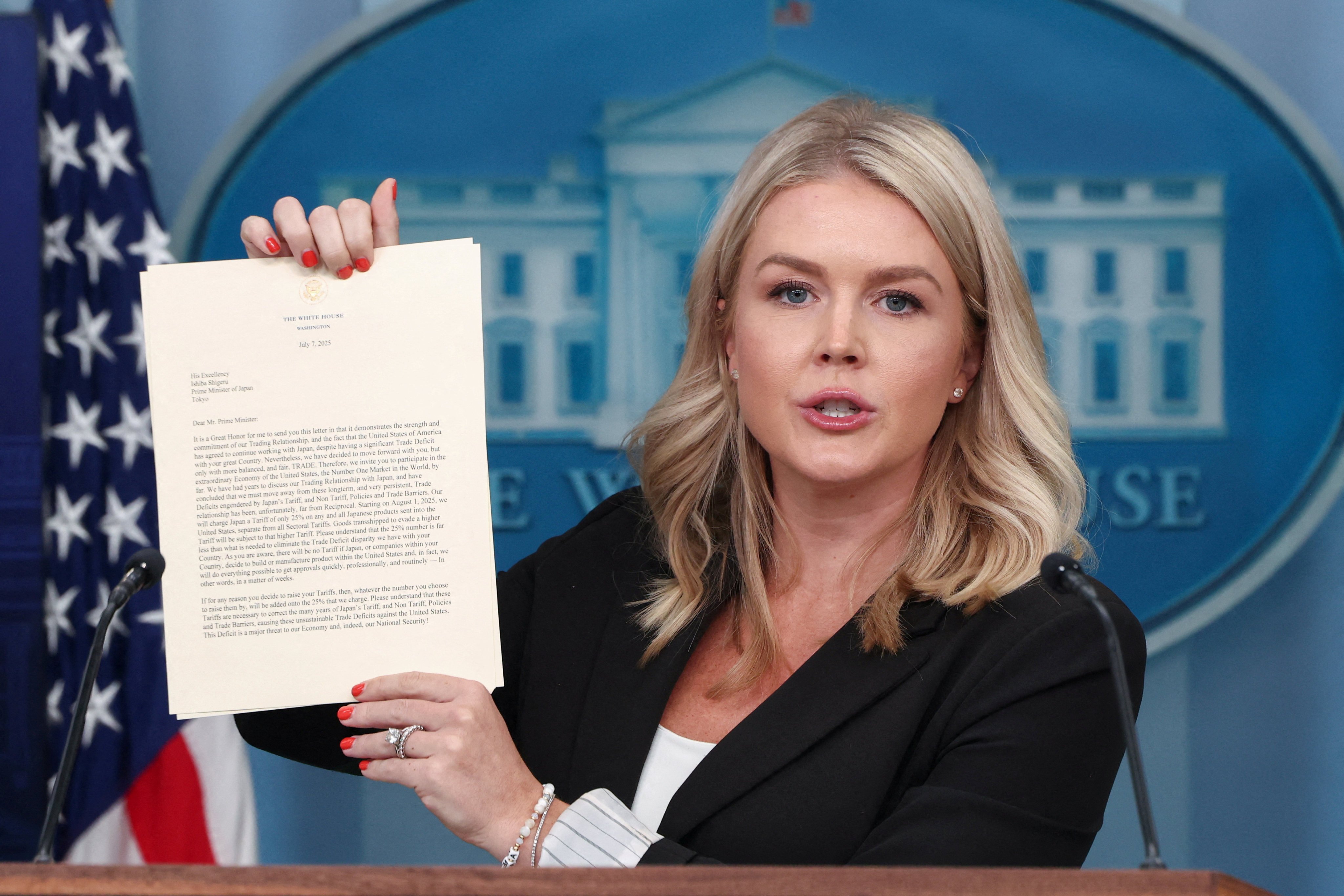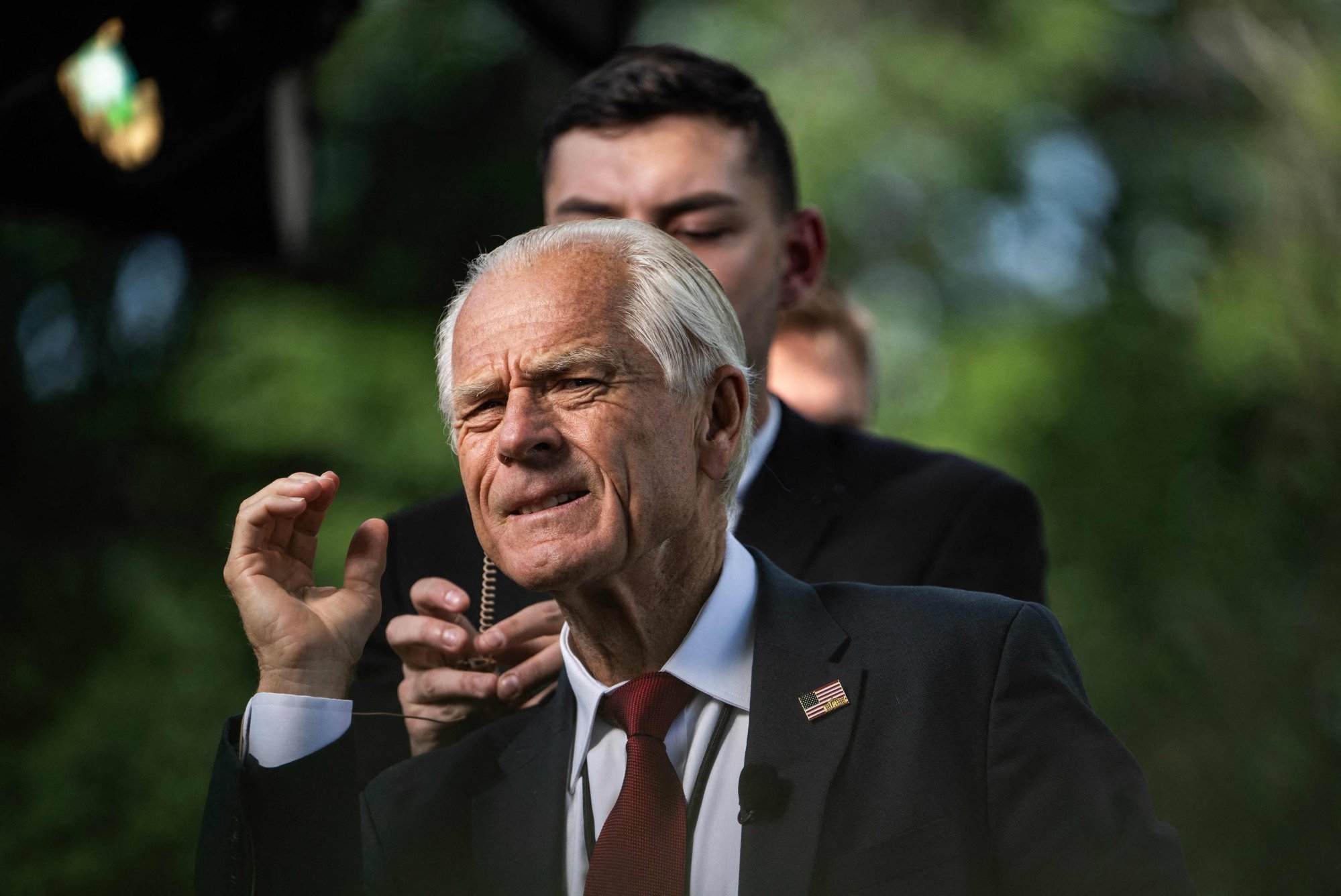Apparently impatient Trump slaps 25% tariffs on Japan, South Korea
Equal or higher tariffs imposed on others before Wednesday deadline

US President Donald Trump, apparently impatient with the slow progress of negotiations, on Monday slapped 25 per cent unilateral tariffs on Japan and South Korea and equal or higher import taxes on several other nations ahead of a self-imposed Wednesday deadline.
Analysts said the move shows that the mercurial American leader is using threats to jump-start negotiations.
Trump sent two-page letters to Japanese Prime Minister Shigeru Ishiba and South Korean President Lee Jae-myung saying the new tariff rates would take effect on August 1.
Minutes later, Trump announced tariffs of 40 per cent on imports from Myanmar and Laos, 36 per cent on Cambodia and Thailand, 35 per cent on Bangladesh and Serbia, 32 per cent on Indonesia, 30 per cent on South Africa and on Bosnia and Herzegovina, and 25 per cent on Kazakhstan, Malaysia, and Tunisia. These rates all stem from an April 2 US announcement of global duties followed by a pause through this Wednesday to allow for talks with a list of affected countries.
Trump also warned all 14 recipients of his letters that if “for any reason” they decided to raise their tariffs, US tariffs would further increase by the same amount.
China is seen as unlikely to be affected by Monday’s release of tariff rates because Chinese and US negotiators have already reached a framework deal that would lower US tariffs to 55 per cent and Chinese tariffs to 10 per cent. China had faced the world’s highest tariffs – some 145 per cent – in April.
The roughly three weeks until tariffs are due to hit Japan and South Korea gives both a chance to push for further negotiations, which Trump would probably welcome, experts said.

“I think the letters are sent as a part of a broader push for trade deals before the July 9 deadline,” said Yun Sun, director of the China programme at the Stimson Centre think tank in Washington. “If Japan and the ROK are willing to make concessions, there is a chance that the letters will be rescinded,” she said, using the abbreviation for South Korea’s formal name, the Republic of Korea.
Trump’s letters urged the heads of state to “understand that these Tariffs are necessary to correct” years of unfair trade practices that led to “unsustainable Trade Deficits” between each country and the United States.
But the letters say tariffs could be “modified, upward or downward” depending on bilateral relations.
Market analyst Terry Haines, founder of the Panagaea Policy political risk analysis firm, said Trump’s threats, deals with other countries and climbdowns in recent days probably count as bargaining tactics. The US has already reached tariff-related deals with Vietnam and the UK.
Governments that receive letters “include countries that very likely end up making deals,” Haines said. “So it’s likely we’ll have some more initial deals that can be built upon.”
Unhandled type: inline-plus-widget {“type”:”inline-plus-widget”}
Neither the Japanese nor South Korean embassies in the US answered requests for comment.
Japan’s tariff talks with the US have particularly needled the Trump administration, with no agreement after eight rounds of ministerial-level talks and the US leader calling Japan “spoiled”.
“The [US] president’s growing frustration with Tokyo has been evident in recent weeks,” said Wendy Cutler, a former US trade negotiator and current vice president of the Asia Society Policy Institute. “Part of this seemed to stem from an unfounded US expectation that Japan would somehow be an easy negotiating partner.”
Trump’s letters to Japan and South Korea, while they threaten additional tariffs if either retaliates, “offers hope of reduction” if either opens further to US products and if they lower tariffs on American goods, said James Knightley, chief international economist for ING Financial Markets in New York.
“We have to remember that President Trump feels that tariffs are a tool that can achieve multiple aims,” Knightley said. One, he said, is a “method for incentivising reshoring of manufacturing that can create jobs, boost incomes, secure supply chains and protect intellectual property”.
Japanese exports to the US reached US$148.2 billion last year and goods from Korea totalled US$131.5 billion. Japan exports mainly motor vehicles, machinery and consumer electronics to the US. Korean exports include cars, electronics and large vessels built in its massive shipyards. Japanese exports last year came to 4.5 per cent of the US total and Korean imports 4 per cent.
Both Asian countries are long-standing military allies of the United States, a chronic concern for China as it jousts with the US for strength in the Indo-Pacific region.
On April 2, when Trump first announced “reciprocal” tariffs around much of the world, Japan was slated for a 24 per cent duty and Korea for 25 per cent.
Analysts said Trump’s move to impose unilateral tariffs on two of America’s leading trading and strategic partners reflects the president’s growing impatience at a process that is traditionally negotiated over months and years, not days, as he wanted.
Cutler called it “disappointing” that Trump would levy tariffs on two partners that have long supported US economic security goals and invested in US manufacturing in recent years. “This announcement will send a chilling message to others,” she said.
In the US, the S&P 500 index had fallen by about 0.5 per cent by late afternoon with an 0.8 per cent drop on the Dow Jones Industrial Average.